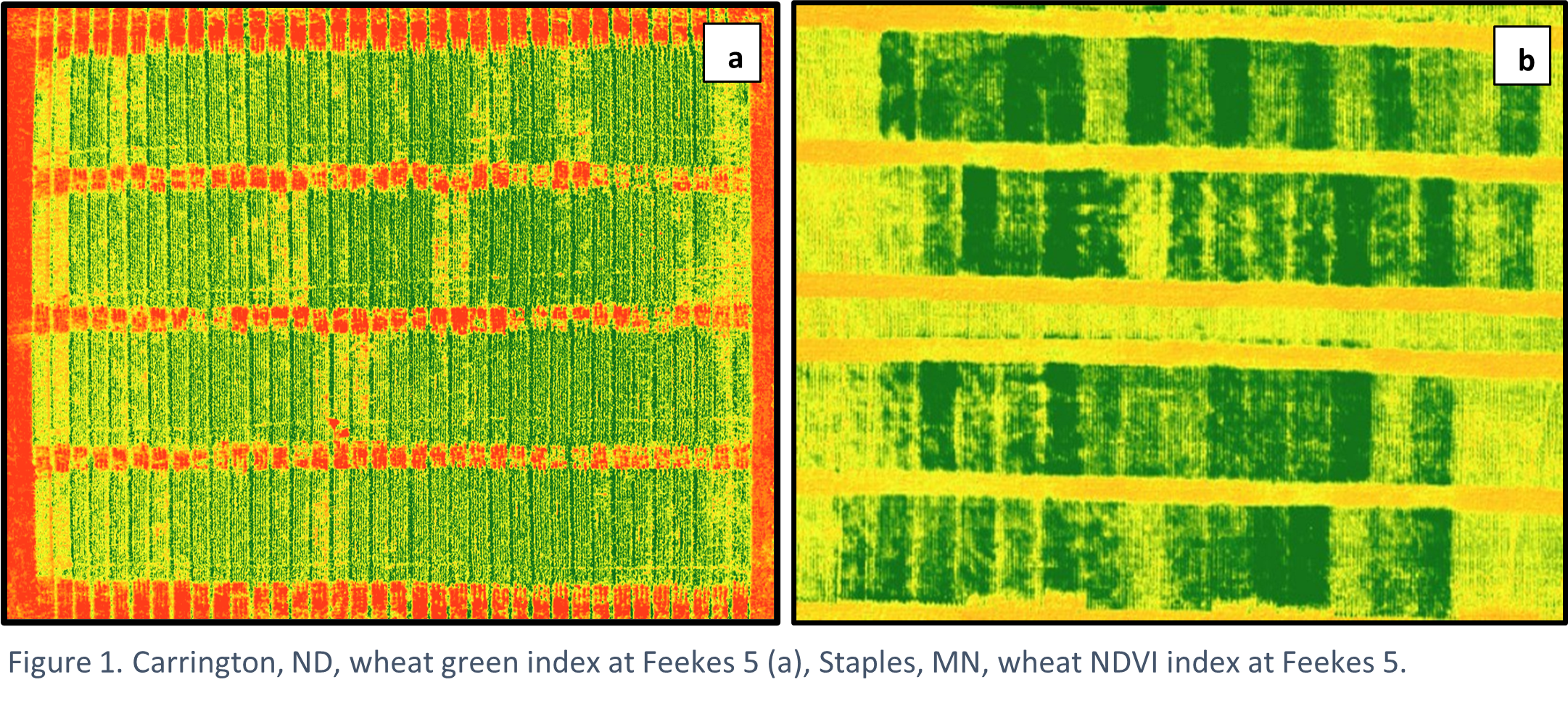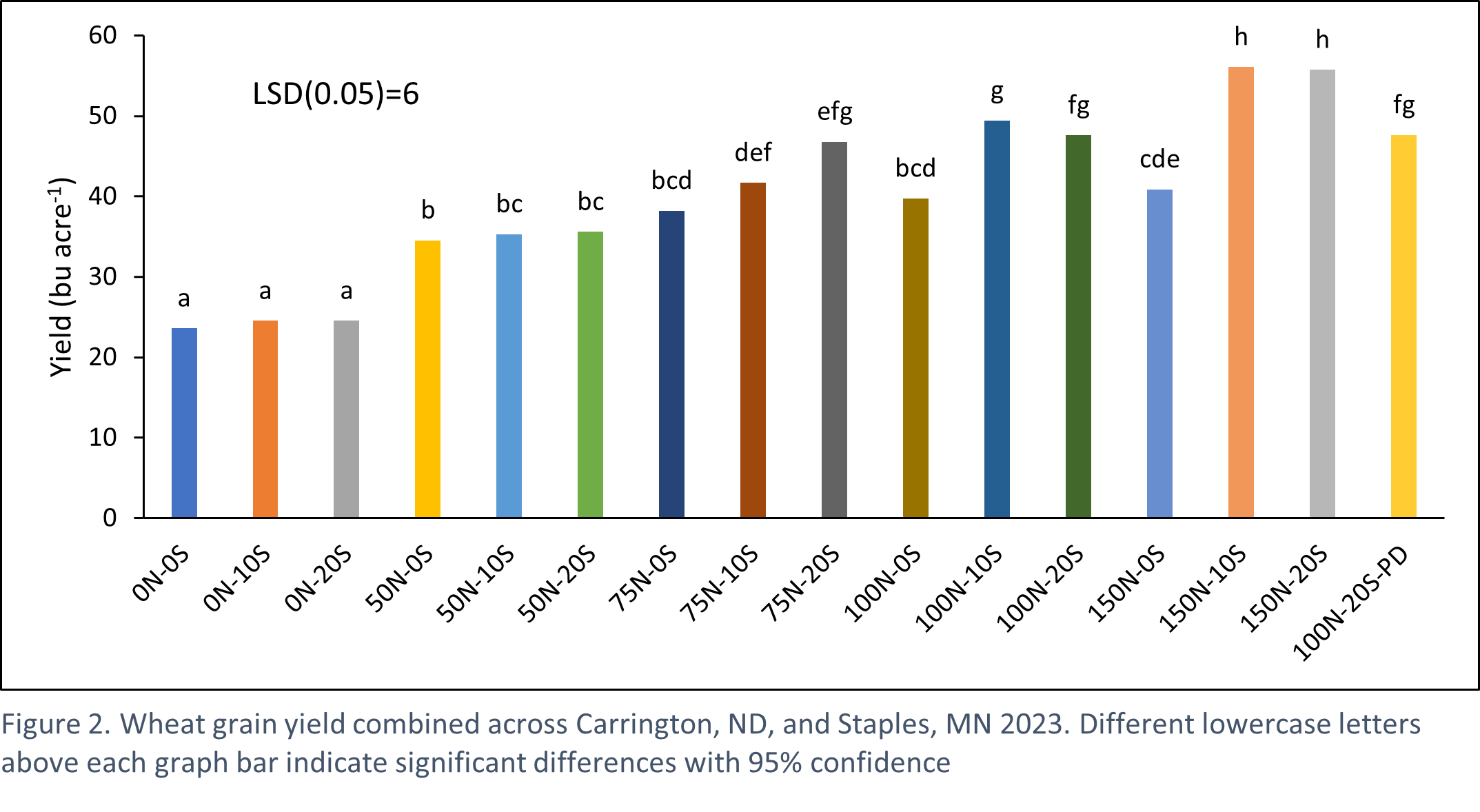Split in-season nitrogen and sulfur applications increase spring wheat yield and quality in conventional and no-till systems
Effective management of nitrogen (N) and sulfur (S) fertilizer is crucial for wheat production, as both nutrients are key to photosynthesis due to their role in chlorophyll production. Many farming operations over-apply N to increase yields, which is neither cost-effective nor sustainable. Given that traditional spring soil tests may not fully reflect nutrient availability due to factors like organic matter and weather, we hypothesized that using split applications of nitrogen and sulfur would significantly increase wheat yields under conventional and no-till cropping systems.
This study, conducted in Carrington, ND (no-till, loamy soil) and Staples, MN (conventional tillage, sandy soil) evaluated how different rates of N and S affect wheat yields. Spring wheat (MN Rothsay) was planted in late April. Sixteen treatments were applied using urea and ammonium sulfate, with nitrogen (N) and sulfur (S) rates (lb acre-1) as follows: 0N-0S, 0N-10S, 0N-20S, 50N-0S, 50N-10S, 50N-20S, 75N-0S, 75N-10S, 75N-20S, 100N-0S, 100N-10S, 100N-20S, 150N-0S, 150N-10S, and 150N-20S. Additionally, one treatment of 100N-20S was applied at planting as a control. Nitrogen and sulfur were applied in a split application, with 60% as a starter and 40% at the wheat Feekes 5 stage.
In 2024, rainfall was above average, with Carrington receiving 32% more and Staples experiencing 57% more than usual. This led to significant leaching of nitrogen and sulfur, which reduced nutrient uptake efficiency. Across both locations, the differences in treatment effects were apparent, as seen in the aerial green index and NDVI images in Figure 1, especially at the wheat Feekes 5 growth stage.

One of the key findings of this study was that sulfur application provided significant grain yield gains compared to treatments without sulfur at the same nitrogen levels. For instance, the 150N-20S and 150N-10S treatments produced more than 15 bushels per acre higher than the 150N-0S treatment, as shown in Figure 2.
Notably, there was no significant difference in yield between the 100N-20S treatment applied at planting and the 75N-20S treatment with a split application. This suggests that reducing nitrogen by 25 percent and applying it in two stages can produce results similar to using the full rate at planting while saving costs and improving nitrogen use efficiency.

This research highlights the benefits of using sulfur and split nitrogen applications. These practices increase wheat yield potential, improve nutrient use efficiency, and reduce fertilizer waste. While these results are promising, continued testing will help refine recommendations for farmers in North Dakota and Minnesota. This study offers a valuable step toward profitable, efficient, and sustainable wheat production.
Sergio Cabello Leiva
Sergio.CabelloLeiva@ndsu.edu
Soil Scientist
